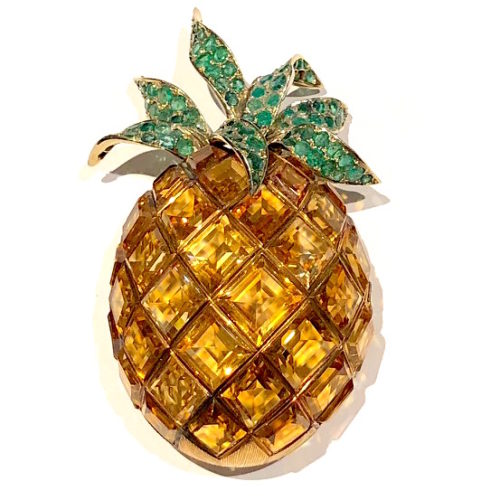Product Description
Enrico Serafini “Pineapple” brooch, 18K yellow and white gold channel set with the pineapple body with citrines with emeralds pave set in the white gold leaves, marked, c. 1950’s



Enrico Serafini (1913-1968) was born in Florence, had a workshop in Piazza Santa Felicità in that city in 1947, and quickly established a successful business creating jewelry for many celebrities of that time, including John Steinbeck and Adlai Stevenson.
Enrico Serafini “Pineapple” brooch, 18K yellow and white gold channel set with the pineapple body with citrines with emeralds pave set in the white gold leaves, marked, c. 1950’s
ETTORE SOTTSASS Italy
WALTER DE MARIO (maker) Italy
Architecural ring 1964
18K gold
Signed: ES1, 750, Walter de Mario touch mark
Illustrated: Ettore Sottsass, Centre Georges Pompidou, Paris, 1994, p. 65
Exhibited: Ettore Sottsass, Centre Pompidou, Paris, April 27-September 5, 1994; Barbara Radice, Ettore Sottsass: A Critical Biography, New York, 1993 p. 144-145 (for related drawings)
MARION FALLER USA
HOLLIS FRAMPTON USA
Apple Advancing 1975
Signed: 782. Apple advancing [var. “Northern Spy”] from “Sixteen Studies from Vegetable Locomotion,” 1975 by Marion Faller & Hollis Frampton) on back of photograph; Marion Faller Hollis Frampton (in script on the bottom of the back of the photograph)
H: 10 7/8” x W: 13 7/8” (unframed)
H: 15 3/16 “ x W: 20 15/16” (framed)
